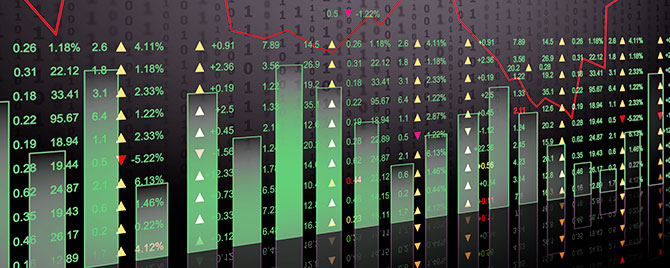SF Fed Blog
-

Can Fintech Fill Asia’s SME Lending Gap?
Perhaps no sector has more to gain from innovations in financial technology than small- and medium-sized enterprise (SME) finance, especially in Asia. SMEs accounted for 42 percent of Asia’s GDP in 2014 yet received only 18.7 percent of bank lending according to the Asian Development Bank. Fintech can particularly leverage the rapid growth of Asia’s e-commerce and regional trade, trends that complement SME development.
-

The Growing Importance of China’s Money Market
China’s money market is growing rapidly and playing an increasingly important role in the financial system. It serves as both a key channel for monetary policy and as a source of funding for a variety of financial institutions. Recent data reveal that non-bank financial institutions have emerged as the largest borrowers, bringing along new risks to financial stability.
-

China’s Credit Growth: How Fast is Too Fast?
China now has one of the highest leverage ratios among emerging economies, with its corporate debt-to-GDP ratio greater than any other major economy. The debt overhang poses challenges to the country’s economic transition and financial stability, although a full blown banking crisis is unlikely.
-

Reducing Remittance Fees can Boost Asian Economies
Remittances exceeded $600 billion worldwide in 2015 with more than two-thirds going to developing countries. Developing Asia receives more remittances than any other region—roughly $200 billion—and in some countries remittances even exceed foreign direct investment inflows. Meanwhile, innovations in payment systems can reduce remittance fees dramatically, increasing the earnings sent back to migrants’ friends and families—and supporting economic growth in Asia.
-

Implementation of New Impairment Standards: IFRS 9’s Impact on Asia
Many Asian economies will soon implement IFRS 9. The new standard will fundamentally change how banks determine loan loss allowances. This significant change in methodology will likely require that many banks increase loan loss provisions, resulting in lower reported earnings.
-

(Re)Classifying Frontier Markets
Pakistan’s recent MSCI upgrade highlights one path for frontier financial market development. While stock index categorization may serve to legitimize a market and bestow prestige, it is not necessarily the best indicator for investor sentiment. Global investors consider a broad range of indicators in considering where to deploy their capital. For frontier and emerging markets conducting financial market reform, the challenge is more complex than an index upgrade might imply.
-

The Bumpy Road towards Renminbi Internationalization
A more volatile exchange rate and dampened growth expectations for the Chinese economy have halted, and in some cases led to reversals in, the renminbi’s path towards becoming an international currency.
-

Japanese Investors Go Abroad with Borrowed Foreign Currency
A half-year into the Bank of Japan’s experiment with negative interest rates, there are growing signs of unusual market activity in Japan, with yields on even long-term government debt going negative and ever-increasing overseas investment. Amid a breakdown in longstanding financial relationships that previously allowed international investors to hedge currency risk cost effectively, Japanese investors are increasingly funding their overseas portfolios with foreign currency debt to minimize foreign exchange risk.
-

Fixing Taiwan’s Crowded Banking Sector
Taiwan has a large number of banks relative to the size of the domestic market, leading to unhealthy types of competition and low levels of profitability. Authorities are trying to solve the problem by promoting bank mergers and international expansion.
-

China’s Bond Market: Larger, More Open, and Riskier
China’s bond market has grown rapidly in recent years and it is becoming more open to foreign investors. At the same time, an increasing number of bond defaults indicate that the bond market is becoming riskier.